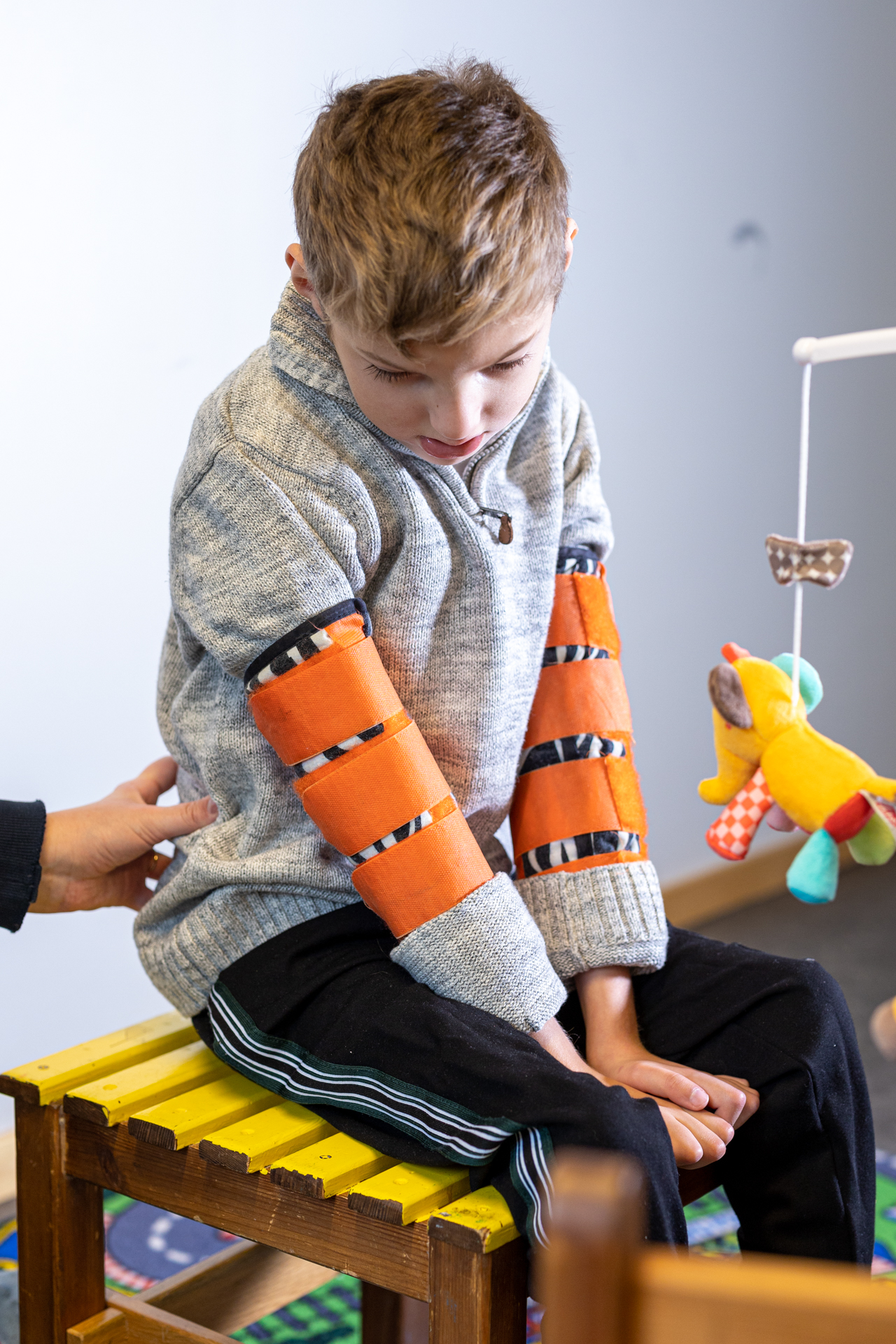
After World War II, Professor András Pető founded Conductive Education in Hungary. Pető did not view the physical disabilities of individuals with brain injuries solely as medical conditions but also as learning difficulties. He demonstrated that physical disabilities, such as cerebral palsy, can be influenced through learning. The core of Pető's method is a holistic approach to personality development. Dr. András Pető's theory that medical problems must be solved through pedagogically based active learning has since been proven.
For a comprehensive development that integrates the motor, cognitive, psychosocial, and communicative domains, Pető recognized the need for a new professional role - the Conductor..
In the 1960s, another idea emerged in Hungary. Due to economic reasons, the conditions for caring for people with disabilities were different. There was no funding for assistive devices, but there were people who could help and support those in need with their bare hands. A pedagogy was developed based on brain plasticity, where activation could achieve developmental progress. In the 1980s, academic education for Conductors began. Parents worldwide sought access to this expertise.
Sweden has long been known for its high quality of care and social services. In the 1960s and 1970s, there were institutions to care for people with disabilities, with the goal of providing some form of education/training for brain-injured patients. In the 1980s, the focus shifted more towards the family. The emphasis shifted from investing in the patient's personal potential to supporting the parents. Many different aids were developed, both physical and social, and a significant budget was allocated to ease the situation for families. In this development, the needs of the children were forgotten. In the 1990s, parents often received the message, "There is nothing we can do about having a child with cerebral palsy. Don't expect any progress. The child is unlikely to sit, walk, or talk. But we can offer you support."
Today, one can find facilities practicing Conductive Education (CE) all over the world. Both private and municipal institutions are emerging. Families and patients see the potential of CE, but the professional side (physiotherapists, occupational therapists, etc.) sees it as competition.

After World War II, Professor András Pető founded Conductive Education in Hungary. Pető did not view the physical disabilities of individuals with brain injuries solely as medical conditions but also as learning difficulties. He demonstrated that physical disabilities, such as cerebral palsy, can be influenced through learning. The core of Pető's method is a holistic approach to personality development. Dr. András Pető's theory that medical problems must be solved through pedagogically based active learning has since been proven.
För en komplex utveckling som integrerar de motoriska, kognitiva, psykosociala, kommunikativa områdena såg Pető behovet av en ny yrkesprofession – the Conductor..
Under 60-talet utvecklades en annan idé i Ungern. På grund av ekonomiska skäl var förutsättningar att ta hand om funktionsnedsatta helt andra. Det fanns inte pengar för hjälpmedel, däremot fanns det människor som med sina bara händer kunde hjälpa och stödja de behövande. Det utvecklades en pedagogik som grundades på hjärnans plasticitet och där man genom aktivering kunde uppnå utvecklingsprocess. På 80-talet påbörjades en akademisk utbildning för conductorer. Överallt i världen ville föräldrar ha tillgång till denna kompetens.
Sverige har sedan länge varit känt för sin höga kvalité av vård och omsorg. I 60- och 70-talets Sverige fanns det institutioner för att ta hand om funktionsnedsatta. Målsättningen var att ge någon form av utbildning/träning till hjärnskadade patienter. På 80-talet började man fokusera mer på familjen. Att satsa på patienten och dess personliga möjlighet försvann bakom det fokus som växte fram på att stödja föräldrarna. Många olika hjälpmedel utvecklades, såväl fysiska som sociala hjälpmedel, och man budgeterade oerhört mycket pengar för att underlätta familjernas situation. I denna utveckling glömde man bort barnen. Föräldrarna fick på 90-talet ofta informationen att ”det är inget man kan göra åt att man har fått ett CP-skadat barn. Förvänta er ingen utveckling. Barnet kommer sannolikt inte att sitta eller gå eller prata. Men vi kan erbjuda er stöd”.
Today, one can find facilities practicing Conductive Education (CE) all over the world. Both private and municipal institutions are emerging. Families and patients see the potential of CE, but the professional side (physiotherapists, occupational therapists, etc.) sees it as competition.

